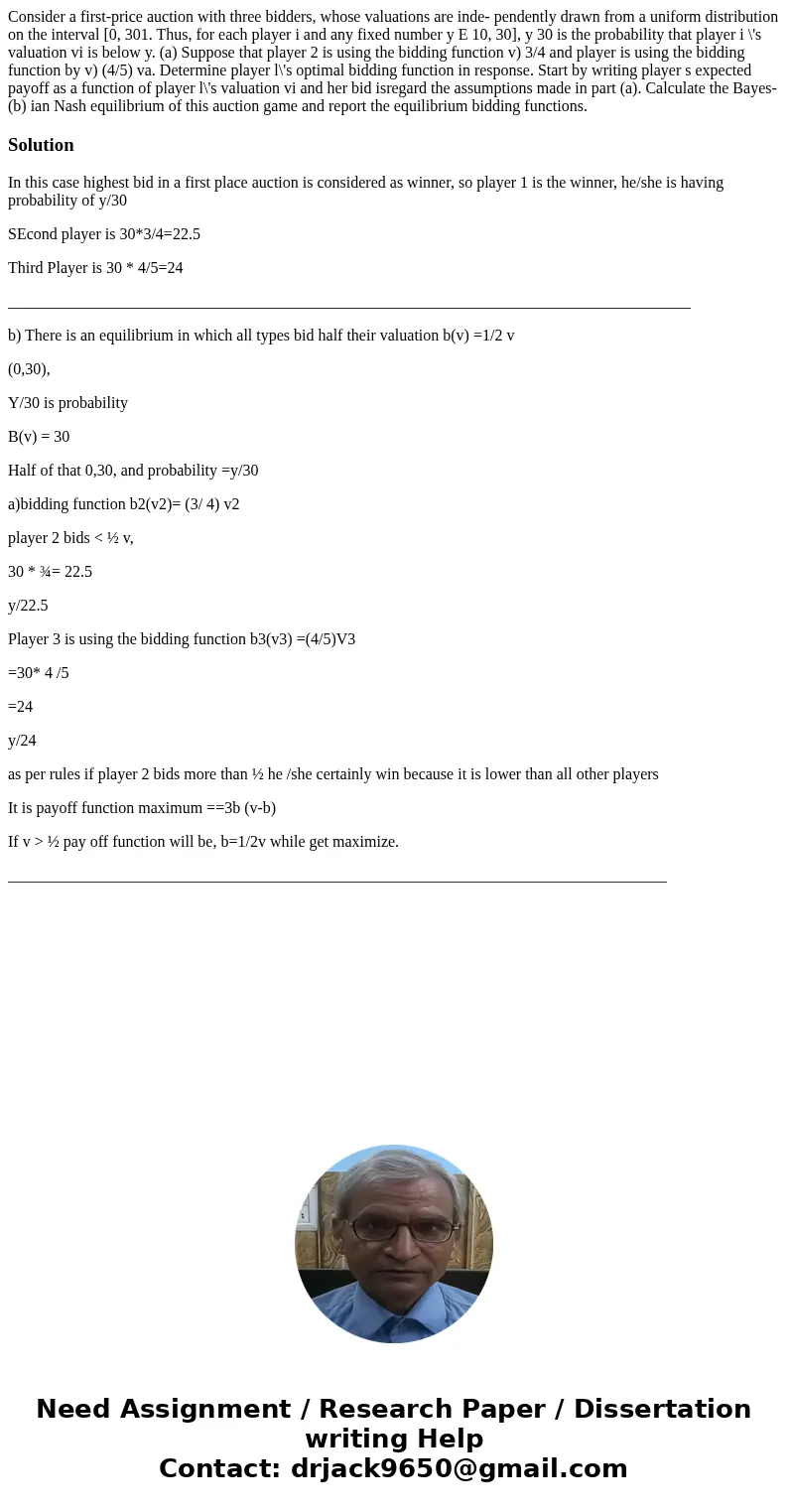Consider a firstprice auction with three bidders whose valua
Solution
In this case highest bid in a first place auction is considered as winner, so player 1 is the winner, he/she is having probability of y/30
SEcond player is 30*3/4=22.5
Third Player is 30 * 4/5=24
______________________________________________________________________________________
b) There is an equilibrium in which all types bid half their valuation b(v) =1/2 v
(0,30),
Y/30 is probability
B(v) = 30
Half of that 0,30, and probability =y/30
a)bidding function b2(v2)= (3/ 4) v2
player 2 bids < ½ v,
30 * ¾= 22.5
y/22.5
Player 3 is using the bidding function b3(v3) =(4/5)V3
=30* 4 /5
=24
y/24
as per rules if player 2 bids more than ½ he /she certainly win because it is lower than all other players
It is payoff function maximum ==3b (v-b)
If v > ½ pay off function will be, b=1/2v while get maximize.
___________________________________________________________________________________

 Homework Sourse
Homework Sourse